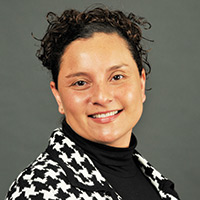Though we live in times that require understanding others more than ever, we are rarely provided opportunities to learn and practice the skills needed to navigate variances among members of our human family. Instead, we have been taught to profile groups of people based upon appearances and rely upon Unhelpful Social Narratives (USN) telling us "who can and who cannot," "who should and who should not," "who ought and who ought not."
Many USNs become default messages, filling in missing information to assist our brains with efficient sorting; a great skill for certain tasks, but not for effectively serving youth, families and others. Sorting people based upon salient factors—perceived or assumed race, ethnicity, age, gender, physical ability, and other variables—leads to misunderstanding, creating a continuum from disengagement to danger with nothing productive happening in between.
Some programs evolved and adjusted to be inclusive, sometimes translating to "you can come, but you have to think and act like us"; other programs are in various stages of dismantling and rebuilding. Agency cultures are deeply rooted in written and unwritten rules, making it critical to realize dismantling and rebuilding does not happen without guidance, growing pains, auditing for equity at all levels, and sustainable equity planning.
Meaningful results in youth development equity require work at the individual, organization and systems levels; they require self-reflection, vulnerability, difficult conversations, understanding historical and contemporary contexts, attention to language and actions, and dismantling long-held policies and practices.
Cultural Agility is a pedagogy that teaches individuals to be their authentic cultural selves to engage with the authentic cultural selves of others—a critical first step for individuals in this work. There is no profiling of sub-groups or treating individuals within a group as a monolith, but instead invoking, evoking, and provoking awareness of one's cultural self and how one shows up in societal contexts. Every individual is a unique cultural being (consider the variations between siblings) and every interaction is a cultural interaction. Being comfortable with acknowledging differences and not placing judgement on them supports trust-building and authenticity—essential components of becoming culturally agile and creating equitable spaces for youth, families and colleagues.
From this place, we can turn our attention to dismantling ...
Effective Individual Steps to Start Developing Cultural Agility
1. Identify your culture. My definition of culture is how one lives, works, learns and plays (Peake, 2012).
- Think: Food, holidays, celebrations, values, traditions, religious beliefs, relationships, and habits.
- Ask: Where did I learn these things? How do they impact how I see myself and how I see and interact with others?
- Do: Talk with a friend who does something different than you. Explain why you want to discuss this—to learn more about yourself and others.
2. Self-evaluate your default messages.
- Think: Stereotypes, media messages, children's books/games/toys, messages you heard from adults when you were a child.
- Ask: Why do I believe this to be true? Are these thoughts based upon lived experiences, or messages I have absorbed without evaluating them?
- Do: Go to a public place and take a walk. As you pass others, let your mind fill in missing information. Then self-evaluate as to what, how quickly and why your mind made quick conclusions about strangers, without sufficient information.
3. Listen to others by calling them in and not calling them out.
- Think: Listen to understand, not to respond or defend.
- Ask: What does this object/person/situation/feeling/thought mean to you? As the listener, we already know what something means to us; talking more at this point defeats listening for understanding. "Tell me more about that" is a helpful listening prompt.
- Do: State your interpretation of what you heard. This allows for clarification and authentic exchanges, if there is a difference, repeat the above prompts.
These introductory steps are designed to ignite self-awareness and evaluate USNs to create equitable youth development spaces. Agency evaluation and change require a commitment of resources, including time, board and administrative support in word and action, and a collective willingness to deliberately push over the Jenga tower and restack with equitable practice as the foundation.
 Marcy L. Peake, MA. LPC, NCC, CFLE is the author of Please Understand: Insights for Assisting Vulnerable Youth, a Western Michigan University faculty member, and founder of The Center for Cultural Agility. Follow her blog.
Marcy L. Peake, MA. LPC, NCC, CFLE is the author of Please Understand: Insights for Assisting Vulnerable Youth, a Western Michigan University faculty member, and founder of The Center for Cultural Agility. Follow her blog.
This article originally appeared in the Fall 2019 issue of AfterSchool Today.

